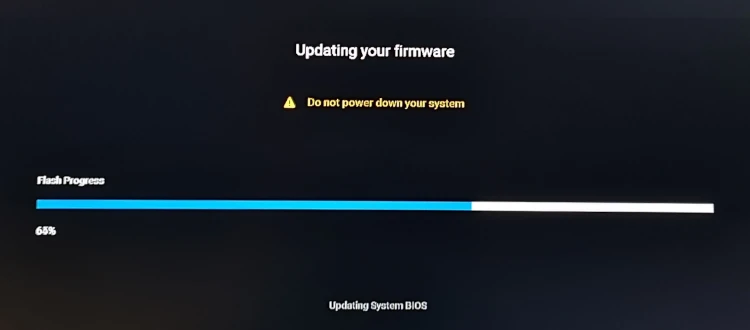The GNU Linux operating system needs no introduction. Many people know about Linux but most have never actually used it. In the past, trying Linux was risky but this is no longer true. This blog post examines four different ways of running Linux.
Depending on your needs and experience, there are four different ways to use Fedora.
- Live USB boot
- Virtual Machine
- Dual boot with existing OS
- Linux only

1 Live USB Boot
Anyone with a decent internet connection can download a Linux ISO image. The days of burning a DVD to install from are long gone. These days, we just use a USB stick instead of a CD or DVD. There are several programs which transfer a Linux ISO to a USB stick.
Rufus
For Windows users, Rufus is a great option. The Rufus program is small and quick to download. Creating a USB stick which can be used to boot from is a two-step process.
With Rufus running:
- Specify the path to the ISO image
(most likely your Download directory) - Specify the destination
(this is your USB stick)
That’s it. Once you provide the ISO file and select the USB stick to write to, you are good to go. The process of writing the ISO to the USB stick takes only a few minutes. When done, you can reboot your computer into BIOS mode and disable secure boot. Save the new configuration and reboot.
While holding down a specific function key, the boot process will stop and display your boot option.
You can select the USB stick with the up and down arrow and press enter.
Which Function key to press
Every computer manufacturer reserved a specific key to access the boot menu. Dell computers use F12. My ASUS Zephyrus laptop uses the Delete key. It’s best to do a quick google search for your brand.
The Tails Linux website provides a table which lists many different computer brands and the shortcut key to press.
Once you know, shot down the PC, wait for 10 or more seconds and press the power button. Hold down the shortcut key while the computer boots and a few seconds later, you will see a blue screen with boot options. Use the up and down arrow to select the USB drive and press enter.
Booting Linux in live-mode is slow because a lot of data has to be read off of the USB stick. Using a USB 3 stick inserted into an USB 3 port is the fastest option. Once Linux boots, you can use the operating system as you like. Just remember that a temporary boot will not remember anything you save on it.
You can restart your computer and boot a temporary Linux operating system as often as you like. This is a good way to test and learn the power of Linux. Now let’s move on to virtual machines.
2 Virtual Machine
A virtual machine allows an operating system to run inside an other operating system. Relax, it’s simpler than it sounds. Let’s say that your computer came with Windows 10. The easiest way to get started is installing VirtualBox. There are other ways but for testing purposes, VirtualBox is fine.
Once VirtualBox is installed and running, you can install any operating system you would like to test. VirtualBox gives part of your hard drive and RAM to the guest operating system. Unlike the USB live boot solution, VirtualBox actually runs the guest operating system with a decent speed. For casual Linux users, the virtual machine option is a good way to work with Linux.
Although I use only Fedora Linux, I still use virtual machines for testing and serving locally hosted websites. Running virtual machines have all kinds of advantages. Once you learned how to use them, you most likely will never computer without them. YouTube has many tutorials that explain the install and usage of VirtualBox. Once you understand the advantages of Linux, you might want to give it all the speed your computer has. To do so, Linux needs to be installed on you computer which we’ll look into next.
3 Dual boot with existing OS
If you still need access to the default operating system that was included with your computer then you can dual boot. The process is similar to using a USB stick for a temporary boot. The difference is that instead of just using Linux in live-mode, you opt to install.
Partitioning the hard drive
If you use the Windows operating system then you can use Disk Manager to shrink the C drive. Depending on the size, you should free up at least 20 Gigabytes or more. If your SSD is 512 GB then I suggest to give Linux about 100 GB. Once the C drive size has been made smaller by the amount you specified, you need to shut the computer off for 10 or more seconds.
Then boot via the USB stick option, let Linux boot and finally, chose to install. There are icons to launch the installer and once you do, a new program will load and take over. If you chose Fedora as your new Linux operating system then you specify the hard drive to install to. The installer is smart and will leave the existing operating system untouched. All that an installer does is add Linux to the boot menu.
Once installed, you reboot your computer and unlike before, you will now have a new option. If you do nothing, then Linux will boot. If you want your old operating system, then use the down arrow key to select it and pres enter. This is called dual-booting and many Linux users chose this option. I used to dual-boot but noticed that once I installed Fedora, I hardly ever used Windows. Because of that, I decided to make Fedora my main and only operating system. Let’s do that in the next and final step.
4 Linux only
Installing Linux as the only operating system is much easier then preparing a PC or laptop to dual boot. The install process once again starts with the USB stick and live boot. If the Linux distribution is Fedora then the hard drive to install to needs to be selected and all existing partitions cleared. The install also offers the option to encrypt the hard drive. I always do because we live in strange times.
Encrypting the hard drive is especially important if you use a laptop. If the laptop ever gets found before you lose it, then your data is safe. An encrypted Linux install is not much different from a regular install except that you have to provide a password so that the computer can boot. No password, no boot. This meas that you must remember your password. If you don’t, then reinstalling is the only option because your data will be gone.
Final thoughts
I have used Linux since 1999 and back then, installing was tedious. Some less user-friendly Linux distributions sill hold on to the old ways but thankfully, Fedora does not. Installing Fedora, once you are familiar with the process, takes only a few minutes to install.
A few months ago, I bought a high-end ASUS Zephyrus G15 laptop which came with Windows 10 Pro. First, I dual booted for a few months but since I hardly used Windows, I opted to install Fedora and have not looked back since. I don’t game (never have) and running UnrealEngine 5, Blender 3D, FreeCAD, Gimp, QEMU, VSCodium gives me all the tools I need for game, web and software development.
For programmers, Python is already included and Fedora has easy-to-follow instructions to install the LAMP stack. I opt to use a virtual machine to run Fedora Server. Out of all the Linux distributions, Fedora checks all the right boxes. Linux users then to be very opinionated about their distribution of choice but for those of us who create content, the options are limited. In the real Linux world, Ubuntu, Fedora and openSUSE are the work horses. The rest is, more or less, noise.
Every Linux distribution has advantages and disadvantages. In the end, the best distribution is based on a mix of:
- Code quality
- BIOS updates
- Documentation
- User base
Code quality matters the most. Ubuntu, Fedora and openSUSE have big corporations backing the development and because of that, deliver polished releases. Their work gets often copied by smaller teams who add various features but professional GNU Linux users usually look past the eye candy on chose stability. I chose Fedora because of how well it runs on the Dell machines here.
BIOS updates are necessary to keep the computer shielded from vulnerabilities. One of the reasons why we opted for DELL PCs is the ease of updating the system BIOS right from within Fedora. In addition, you might have heard of Meltdown and Retbleed which exploit CPU instructions. To make a long story short, there is much more to an operating system than just software updates. Here at fedorum.com, we trust Fedora to keep our systems safe and up to date.

Documentation is Linux’s weak point. Good documentation is hard to find and Fedora understands that well. If you are still deciding on which Linux distribution to pick for your daily driver then check out the fedora documentation
I have spend many hours reading various topics which I needed for Fedora system administration tasks. The documentation is so well written that I hardly need to post on forums which is discussed next.
User base is about the actual users. There are many websites where Linux users chat and post questions. The information posted on forum boards is often of little help and each Linux flavor has fan boys which seem to create very little and talk a lot. Still, the user base counts and when the documentation does not provide a fix, a forum post might.
This pretty much covers the four ways of running and using Linux. Each of the methods has advantages and disadvantages. If speed is not an issue then a USB live boot is a good option to get to know Fedora. If Windows comparability is a must then dual booting is the best solution. If you have switched to an open-source software only workflow then all you need is a robust computers that can run Linux.
Also keep in mind that Linux does not force the users to register an like Apple and Microsoft do. Fedora uses the Gnome desktop and makes opting out of telemetry as simple as going to Settings > Privacy > Diagnostics and unchecking “Automatic Problem Reporting”. Depending on what you use your computer for, this might be a good choice. If you want to help the developers with reporting issues then leave the option on. It’s your choice and that sums up Linux because it is a choice. Linux gives us, the users, the power to chose. Although support is encouraged, they never ask for a penny while providing fast downloads, daily updates and the latest software – al for free.
I hope that this article inspired you to try Linux and free your computer from bloat that no one wants. Linux is not perfect but all things considered, the best operating system by far. What say you?



